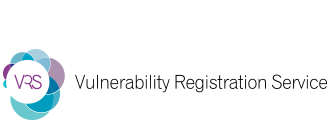GRASPING THE NETTLE
IDENTIFYING AND SUPPORTING VULNERABLE CUSTOMERS
VRS
Features
Vulnerability Registration Service (VRS) produced our Vulnerable Customer Exclusion report at the end of last year and it showed some frightening but not surprising statistics. We know from the FCA that around a quarter of the population consider themselves to be vulnerable and our report underlined that, but 10% of people deem themselves to be at risk of homelessness, eviction or repossession and 2% of people are having to turn to loan sharks. Our findings were collated before the cost-of-living crisis had hit.
One of the most worrying things we’ve learnt while building VRS is how many of us are on the precipice – a risk of spiralling into unmanageable debt with no obvious route out, falling prey to unregulated lending, becoming so overwhelmed that we are unable to reach out or find the support that may be available.
CCTA members already play a massive role in providing part of the safety net that sits between financial inclusion and enabling people to remain in control, rather than being caught up in a tidal wave of debt collection, enforcement, mental health impact, prepayment meters and seemingly no way out.
I think many lenders are still bruised from adverse publicity five or more years ago. Headlines like ‘legal loan sharks’ and ‘toxic lending practices’ still resonate and understandably make us defensive. Are we exploiting vulnerable customers by lending to them? The reality is that vulnerable people come in many shapes and sizes and in many cases it is more than appropriate to lend to them. The alternative is to increasingly limit their options and remove that safety net.
There is a big opportunity for lenders to grasp the nettle when it comes to managing vulnerable customers and, as obvious as it may sound, the key to do doing so is to accept that some of our customers are indeed vulnerable, to understand the challenges and then start to manage them. We are still a long way off from doing so and that is not sector specific.
Virtually every organisation I speak to, in every sector, is grappling with (if indeed it’s high enough on their radar) how to tune their customer journey to extend the right support to their customer base. But nobody is going to come up with a magic solution – there is no master plan from government, regulators or stakeholders to address this. We need to just get on and do it because there will be regulator action, there will ultimately be fines and there will be increasing amounts of negative press and media focus. Most of all, it’s the right thing to do.
We need to just get on and do it because there will be regulatory action, there will ultimately be fines and there will be increasing amounts of negative press and media focus. Most of all, it’s the right thing to do.
The first step is to identify vulnerability. That is not limited to financial hardship or indebtedness – a tick in the box by doing a credit reference check is not enough. There is usually context around why people are struggling and our customer management can be adapted accordingly. People may be struggling with mental or physical health, they may be being coerced or in the throes of a temporary life event that they need to navigate their way through.
I believe CCTA members are well placed to lead the way on this – to embrace the fact that very often they are providing that ‘safety net’ and that the services provided are regulated and follow best practice – by accepting that vulnerable customers quite legitimately are extended credit but equally, where appropriate, they are also extended support.
One of the primary aims of creating the VRS data sharing model is, not only to alert service providers to their customers’ vulnerabilities, but to help those customers receive targeted support. This is a two-way street. By sharing data about vulnerable customers, we can gradually ensure that they are proactively led to support rather than them needing to seek it out when they are least equipped to do so. We are already driving initiatives to ensure that there is heightened awareness of the Priority Services Register, benefits calculators, debt management and discounted tariffs.
VRS works in partnership with Data on Demand to help identify vulnerability. We are offering an initial data wash for organisations to pinpoint any declared vulnerability about their existing customers as a demonstrable step towards meeting the expectations of Consumer Duty. This is being offered at a discount to CCTA members.
























